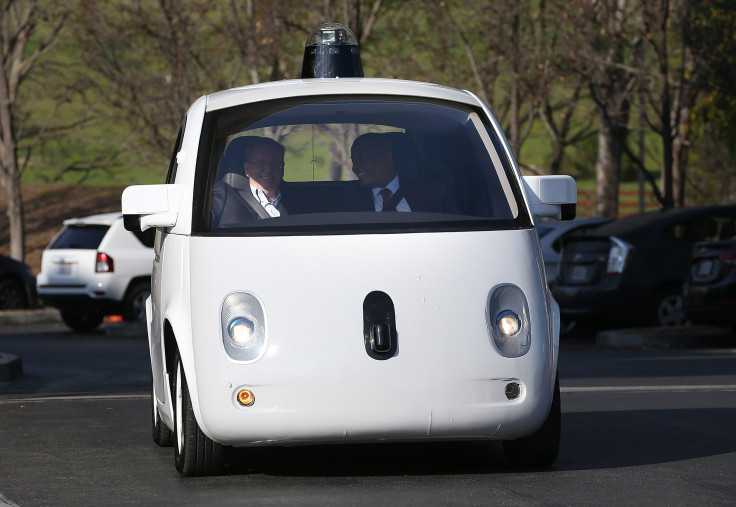Driverless Car Rules: Google ‘Gravely Disappointed’ Over California’s Proposed Autonomous Vehicle Regulations

Google expressed disappointment over proposed regulations for driverless cars announced by the California Department of Motor Vehicles Wednesday. The proposed DMV rules will require autonomous cars to be operated by a licensed driver.
Under the new rules, the autonomous vehicles can’t be completely self-driven and will require someone behind the wheels and pedals who can take control of the car if required. The motorists will be responsible for obeying traffic laws, regardless of whether they are at the wheels. Two public hearings on the regulation are being planned by the state’s motor-vehicle department, with the first expected to be held in late January.
"A licensed operator will be required to be present inside the vehicle and be capable of taking control in the event of a technology failure or other emergency," a draft of the recommendations stated.
“The draft regulations establish financial responsibility, vehicle performance, vehicle equipment, and vehicle registration requirements. Consistent with the testing regulations, commercial vehicles are excluded from deployment. Due to the size of these vehicles, DMV believes that public safety is best served by initially limiting deployment to passenger vehicles,” the department said, in the statement.
The proposed regulations would also require consumers to get a special state-issued driver’s certificates after receiving training from a car company on how to use a driverless vehicle. The vehicles also reportedly have to qualify in a test that will be administered by a third party before being sold.
“In developing vehicles that can take anyone from A to B at the push of a button, we’re hoping to transform mobility for millions of people, whether by reducing the 94% of accidents caused by human error or bringing everyday destinations within reach of those who might otherwise be excluded by their inability to drive a car," Google spokesman Johnny Luu, said in an emailed statement to TechCrunch. "Safety is our highest priority and primary motivator as we do this. We’re gravely disappointed that California is already writing a ceiling on the potential for fully self-driving cars to help all of us who live here.”
The proposed regulations were announced following months of study by California’s DMV after the state’s legislature stated that it required the DMV to develop regulations for testing and the deployment of autonomous vehicles.
“Google may be in overdrive in its rush to develop robot cars, but the DMV has admirably served as traffic cop and proposed reasonable limits to protect public safety,” John Simpson, director of consumer watchdog Privacy Project, said, according to the Wall Street Journal.
Google’s driverless cars are reportedly part of Alphabet's secretive X division that experiments with new technologies and has reportedly been testing autonomous vehicles in California since 2009.
On Wednesday, Google also said that it will separate its driverless car division, which will operate as a standalone business under Alphabet Inc. -- the parent company of Google. Under Alphabet, the self-driving car service may begin offering rides for hire in major cities such as San Francisco and Austin.
“Our concern is safety,” Brian Soublet, California DMV’s chief legal counsel, said in response to a question about whether the regulations might hurt Alphabet’s efforts. “DMV believes that manufacturers need to obtain more experience in testing driverless vehicles on public roads prior to making this technology available to the general public.”
© Copyright IBTimes 2024. All rights reserved.




















